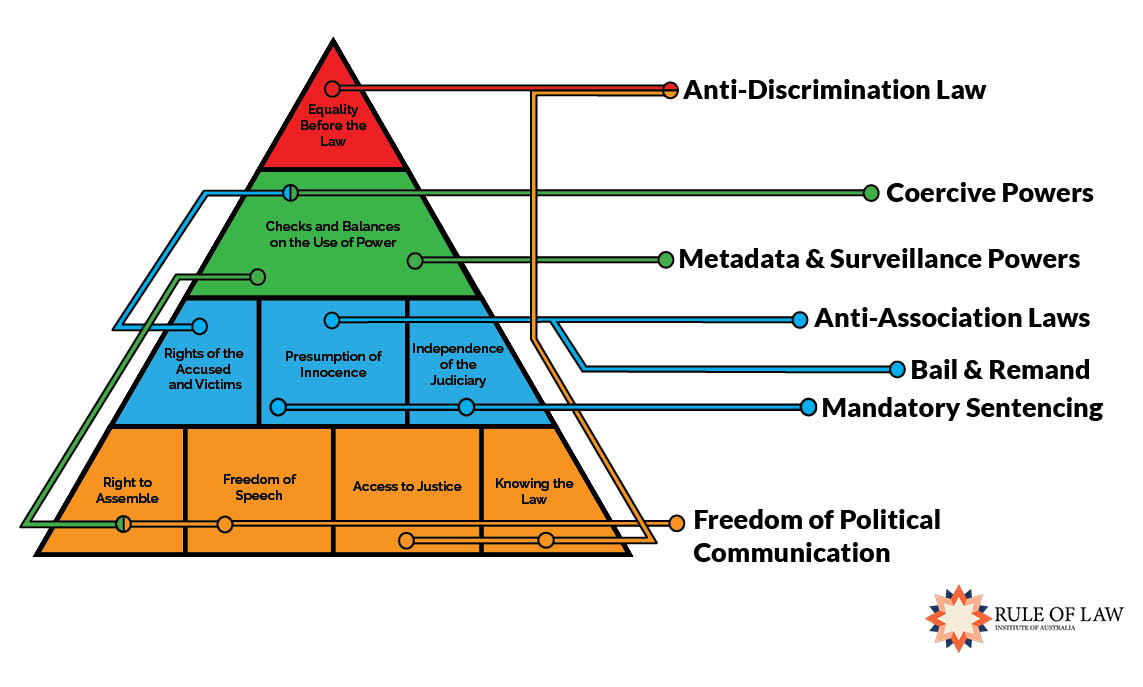The Rule of Law Institute’s educators have developed a three stage approach for teaching complex legal issues. It is described below along with a graphic of our rule of law pyramid.
The rule of law pyramid assists students to understand legal concepts that are essential aspects of the rule of law. The pyramid allows a link to be made between context, law, and real case studies with abstract ideas. The pyramid is a framework which encourages students to develop a critical approach to legal studies using the rule of law as a framework.
Teaching Strategies for Critical Thinking with Case Studies
Principles & Context
Use the rule of law pyramid to articulate a framework for teaching critical thinking by showing relationships between rule of law principles and context.
- Explain the meaning of rule of law principles, ask what happens if they are not present in a society.
- Use the pyramid as a flexible framework to give a visual structure to legal principles and concepts.
- Set the legal context by explaining how and why we have a given principle – this lays the foundation for telling stories and explaining black-letter law that is interesting and engaging.
Stories + Skills
A good story always has a hook at the beginning, an interesting or challenging complication and a resolution.
- Pick an interesting and relevant case study that relates to multiple principles in the pyramid.
- Make a judgement-call based on your knowledge of the students about how best to describe and explain the black-letter law (legal processes and terminology). This could be as simple as providing a reference to a law, or a great quote from a case and telling students why it matters in terms of a principle from the pyramid. It could be as complex as asking students to read small excerpts of law and argue about what specific legal terminology could mean.
- Explicit teaching of research skills and legal terminology supports comprehension of legal texts: the golden rule is to chunk complex concepts into smaller units with reference to real people and examples.
Synthesis
Synthesis is the act of using the resolution of the story, the principles in the pyramid and the context to leave students with a broader idea or problem to think about.
- The resolution of the story refers explicitly back to principles – does the story represent a positive, negative, or other kind of outcome for the principle in question?
- Make the resolution of the story problematic and present opposing perspectives
- Expect students to articulate their own view about a case study based on a synthesis of principle, context and law.
- Ideally this process will help students examine and interpret other case studies and legal issues.

